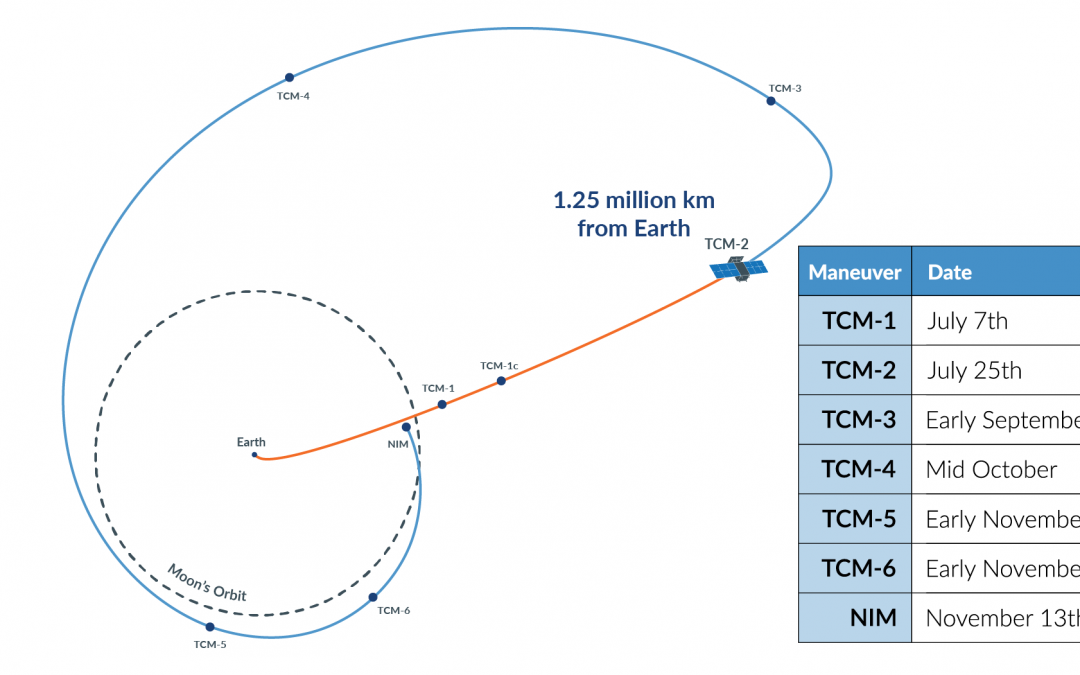Spacecraft remains on target to test navigation technology and lunar operations to support NASA’s Moon missions under Artemis programs
It is hard to believe we launched CAPSTONE almost a month ago. We have encountered many variables that have kept this mission exciting, and the mission operators have been active. The Advanced Space Astrodynamics and Navigation Engineers have been busy for years leading up to this and just as busy this last month as CAPSTONE flies. An assumption may be that a small satellite means less work but in actuality the effort is just as great if not more so. Small satellites with small budgets and size restrictions require more creativity and calculated steps to ensure precision and execution through the process.
Monday’s trajectory correction maneuver (TCM) was conducted in two stages to allow the navigation software to recalibrate in order to make the full burn more accurate. The first portion of the maneuver lasted 11 minutes and the following portion was 15 minutes. This TCM performed a small accommodation to align the outbound trajectory from launch to the inbound trajectory to the near rectilinear halo orbit (NRHO), the intended orbit for the Gateway.
“Our team has been showcasing unique expertise and improving our tools and knowledge since the beginning of the CAPSTONE mission 2.5 years ago. Each stage of the mission validates these capabilities and demonstrates the ability of our team to optimize and support operations in challenging environments such as cislunar space,” said Bradley Cheetham, Advanced Space chief executive officer and CAPSTONE principal investigator. “Our team is driven, resilient, and dedicated to supporting the sustainable exploration, development, and settlement of space through all phases of the mission and in the face of challenges and adversity.”
State-of-the-art technology will be used by the small satellite beyond low earth orbit to navigate the spacecraft. Once at the NRHO, CAPSTONE will demonstrate the peer-to-peer navigational technology advancement of the Cislunar Autonomous Positioning System (CAPS) developed by Advanced Space. This system will revolutionize the future of spacecraft navigation. Not only will the dependency of Earth communications systems to determine the location of the spacecraft be reduced but mission costs from utilizing those systems will also become reduced.
This week’s maneuver confirmed the microwave-size spacecraft remains on its ballistic lunar transfer (BLT) to the Moon. The Advanced Space team continues to conduct flight dynamics analyses, orchestrate their designed maneuvers, and maintain spacecraft navigation with the Terran Orbital team commanding spacecraft activities. Operations includes exchanging data with NASA’s Deep Space Network and working with component builders – Stellar Exploration for propulsion and Space Dynamics Laboratory for the radio system.
At the completion of the TCM, CAPSTONE was 1,250,796 km from Earth and moving at 595 mph (267 m/s). CAPSTONE is still scheduled to reach the target NRHO in four months on November 13th.
